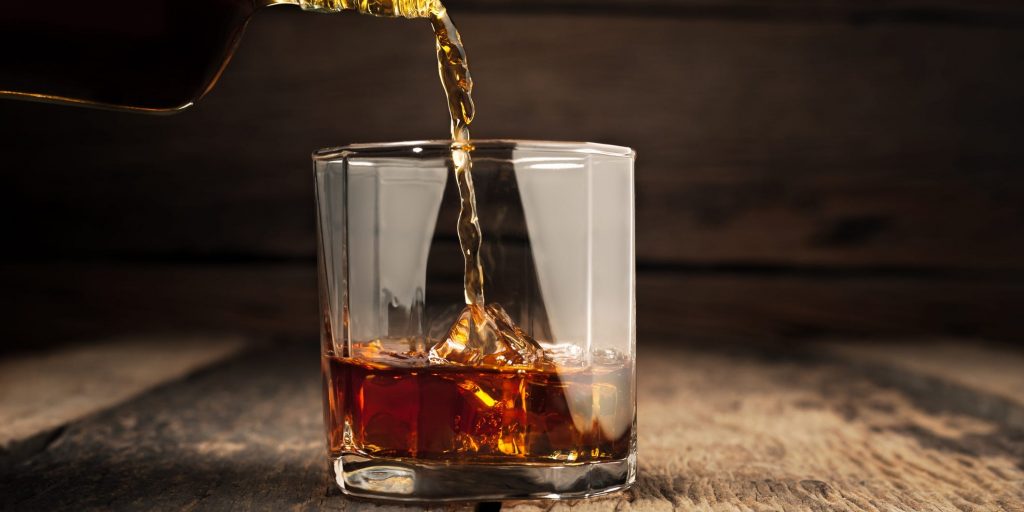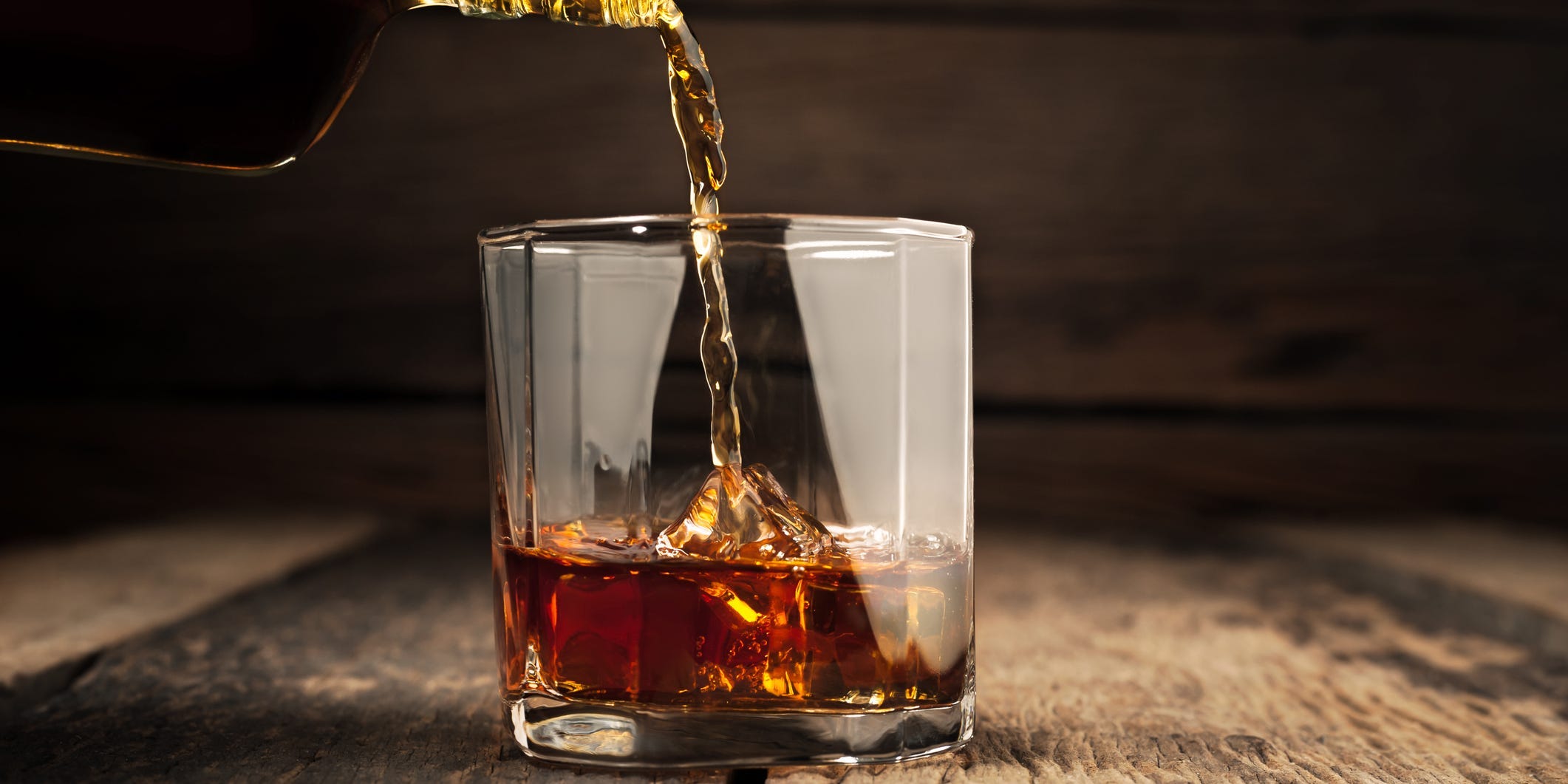
wiratgasem/Getty Images
- Whiskey is a distilled spirit made from grains like corn and rye and aged in wooden barrels.
- Bourbon is a type of whiskey, and there are strict rules in place to ensure its quality.
- Bourbon must be made in the US, distilled from at least 51% corn, and aged in new oak-charred barrels.
- Visit Insider's Home & Kitchen Reference library for more stories.
Most people who enjoy the occasional libation have encountered whiskey at some point in their lives. But you might not have thought much about what it actually is.
Simply put, whiskey is a distilled spirit made from fermented grains and then aged in wooden barrels.
Historians can trace its origins back to Ireland, where there is evidence of it being distilled in the early 15th century. Because of its historical and geographical significance, there are strict legal guidelines in place to maintain quality standards and ensure that each type of whiskey maintains its unique attributes.
Bourbon is by far the most popular variety of American whiskey. That's right – bourbon is a type of whiskey. There are many myths and legends about the origins of bourbon, but it's believed that whiskey has been distilled in the United States since the late 18th century.
Bourbon is closely associated with the American South, most notably Kentucky. It is often enjoyed on its own, or as part of popular cocktails such as the old fashioned, mint julep, and the Manhattan. But what is it that makes bourbon such an enduring and desirable beverage?
To help demystify the relationship between bourbon and other whiskies, we spoke with rare whiskey collector and founder of the Anthology Whiskey Room, David Gustafson.
What makes a whiskey bourbon?
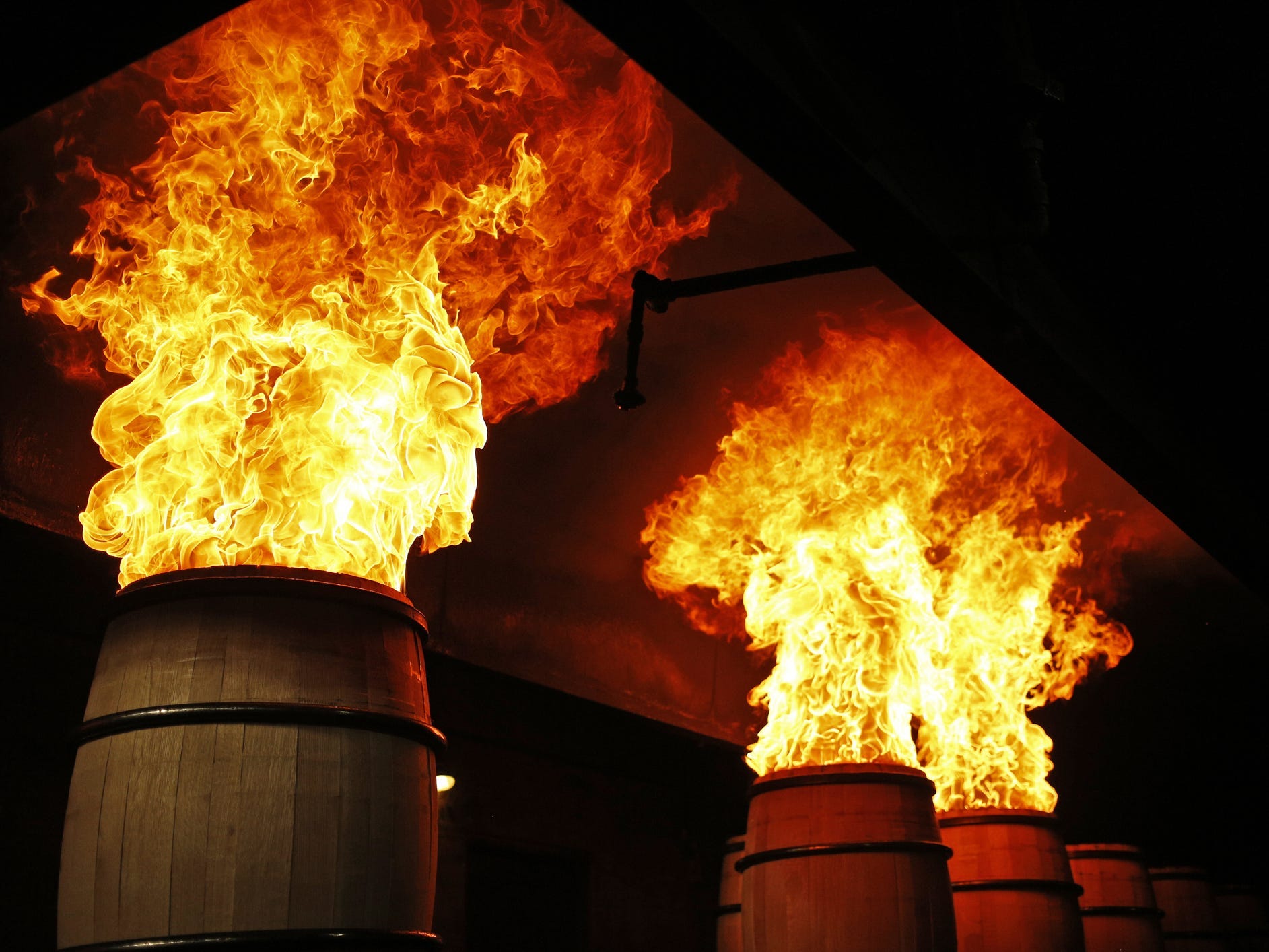
Luke Sharrett/Bloomberg/Getty Images
Many drinkers think that bourbon and whiskey are completely distinct. "People will come into the whiskey room and say something to the effect of 'Do you have bourbon too? Or just whiskey?' or 'I don't really like whiskey, but I like bourbon,'" Gustafson says. "There's a common confusion about what they are. They're all whiskies."
Because of its cultural significance in the United States, bourbon is made with very specific criteria to ensure it maintains the qualities that make it unique. "Bourbon is a younger whiskey," says Gustafson. "It isn't aged for as long as Scotch" - which is another type of whiskey - "so it gets most of its flavor from the grains used."
To maintain standards across the industry, there is a strict legal definition of what actually constitutes a bourbon:
- Geographic region: All bourbon must be distilled and aged in the United States. It is closely associated with Kentucky and the Southern US, but it can be made anywhere in the country.
- Grain makeup/mash bill: Bourbon is a grain whiskey. To meet the legal requirements, it needs to be distilled from at least 51% corn. The remainder can be any other type of cereal grain such as rye, barley, or wheat. This combination of fermented grain is called the mash bill. "Each cereal grain has its own set of characteristics," Gustafson says.
- Aging process: Bourbon must be aged in new, charred barrels made from American white oak. Aging in the barrel is what gives bourbon its color, along with added flavor from contact with the wood barrel. The aging process can last anywhere from a few months to many years. Whiskey bottles are often labeled with the number of years they are aged in the barrel. This is called the age statement.
- Proof: Bottled bourbon must be at least 80 proof (40% alcohol by volume). There are standards for what proof the bourbon must be at other points in the production process, too. Legally, bourbon must be distilled to no more than 160 proof (80% ABV) and must be at 125 proof (62.5% ABV) when the barrel aging process begins.
- Subtle taste differences: Bourbon generally has a sweeter flavor profile when compared to other whiskies. Notable flavor notes commonly attributed to bourbon are toffee, vanilla, and butterscotch. Bourbon's trademark sweetness is derived mostly from the corn and other grains fermented as part of the mash bill.
- Straight bourbon: Straight bourbon is a style of bourbon that adheres to stricter standards and regulations. A straight bourbon must be aged for a minimum of two years. If it is aged less than four years, the bottle is required to display an age statement. Straight whiskies are also not allowed to use any sort of additives, such as caramel coloring.
Other types of whiskey
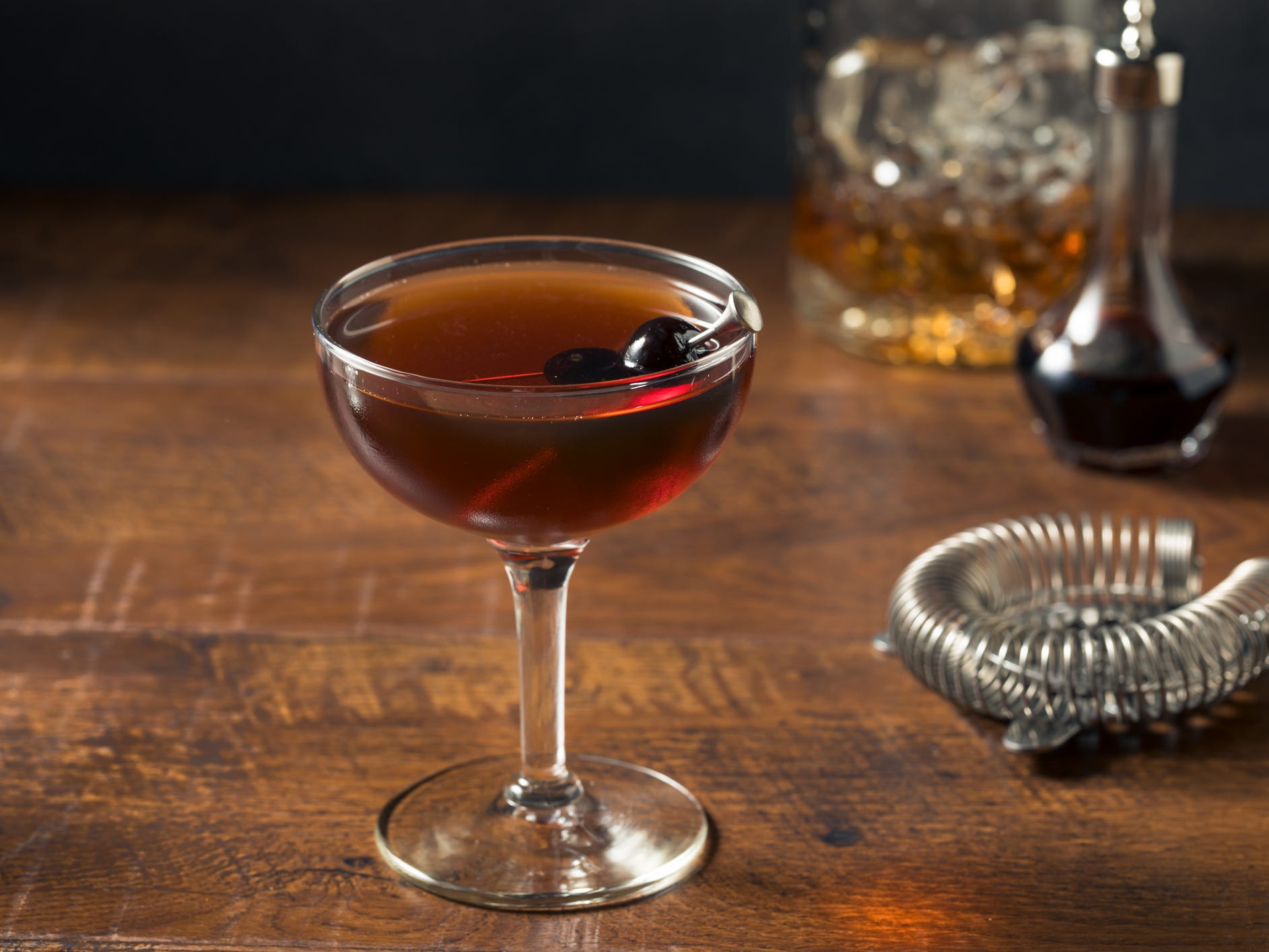
bhofack2/Getty Images
Of course, bourbon isn't the only type of whiskey. "Bourbon is whiskey. Scotch is whiskey. They may spell the word 'whiskey' differently, but they're all whiskey," says Gustafson. Every region and style has unique recipes along with its own fermenting, distilling, and aging standards that ultimately lead to notably distinct flavor profiles.
Rye whiskey
Rye, like bourbon, is a type of American whiskey. Rye whiskies use a minimum of 51% rye grain in their mash, while bourbon requires the mash bill to contain a majority of corn. This means rye whiskies tend to be less sweet than bourbon, and are generally said to have more of a spicy or fruity flavor.
Scotch whiskey
Like bourbon, there are strict requirements for a whiskey to be considered a Scotch. Most importantly, it must be fermented, distilled, and aged in Scotland. The mash needs to be primarily composed of malted barley. Malting is an important process in which the barley is soaked in water and allowed to germinate before drying and halting the germination.
Scotch is aged for a minimum of three years in second-use barrels, usually left over from aging bourbon or brandy. It must also be at least 80 proof (40% ABV). Scotches are often classified by which region they are distilled in. There are five recognized regions: The Highlands, Lowlands, Islay, Campbeltown, and Speyside.
Scotch can display a wide variety of different flavor notes. For example, distilleries use peat smoke to dry the malted barley, which gives the finished Scotch a smoky, earthy flavor. On top of common flavors like caramel and vanilla, Scotch can display unique and sometimes challenging medicinal flavors. "I think Scotch is much more of an acquired taste than bourbons," Gustafson says.
Irish whiskey
Ireland is the ancestral home of whiskey. Irish whiskies don't command quite as much attention as whiskies from the United States or Scotland, but they can definitely hold their own. The most notable distinction between Irish whiskies and others is that all Irish whiskies have to be fermented, distilled, and aged on the island of Ireland.
There are a variety of different methods utilized in the production of Irish whiskies, but overall they are known for their more accessible flavor profile than their Scottish counterparts. One unique style of Irish whiskey is single pot still, a distilling method in which malted barley and raw, unmalted barley are combined, along with other grains in the mash.
Japanese whiskey
Japanese whiskey has exploded in popularity in the last 10 years. Japan may not have the same lengthy history in whiskey production as Ireland or Scotland, but they have quickly made a name for themselves. There aren't such strict regulations on production in Japan, so any whiskey made in the country falls under the category of Japanese whiskey.
Japanese whiskey production is most closely related in method to that of Scotland, with a focus on the production of single-malt whiskies. Japan excels in creating balanced and drinkable whiskies that taste great alone and in highballs or cocktails.
Single-malt vs. blended whiskies
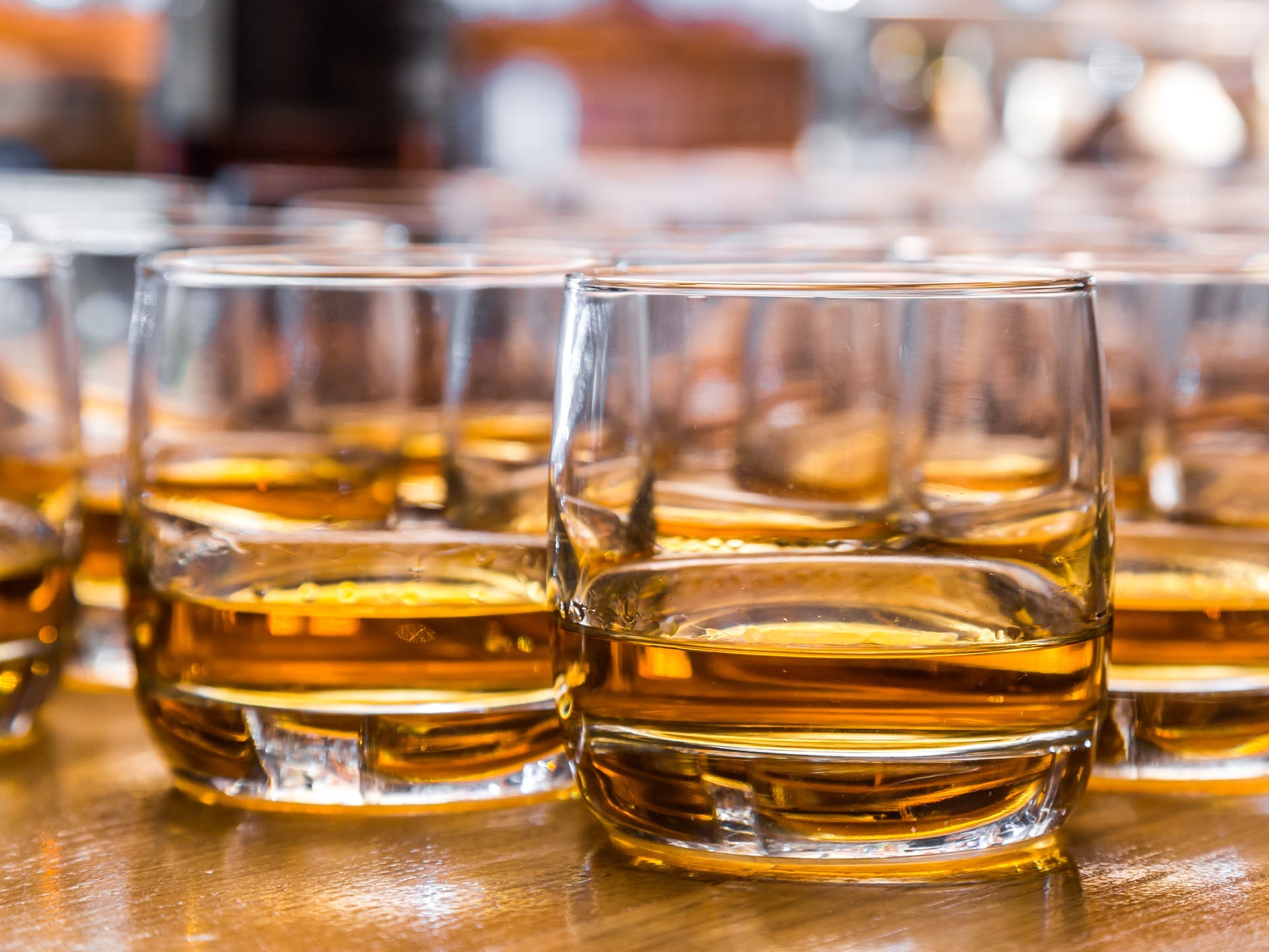
Vincent20044/Getty Images
One of the most common distinctions talked about with whiskies is between "single-malt" and "blended" whiskies. A single-malt whiskey has to come from one individual distillery.
A blended whiskey is taken from a variety of distilleries and combined. Whiskies are blended in order to maintain a more consistent product, while single-malts allow distilleries to get more of the unique attributes of specific whiskies to shine through. But many excellent whiskies can be found in both categories.
Insider's takeaway
Walking into a liquor store and picking out a bottle of whiskey can seem like a daunting process. Understanding the nuances and differences between each style can help you find the whiskey that best suits your taste and your intended serving style. Whether it's bourbon or any other type of whiskey, there are years of work and centuries of history behind each bottle. And remember, bourbon, Scotch, and rye are all types of whiskey - are they're all delicious.
Dit artikel is oorspronkelijk verschenen op z24.nl
